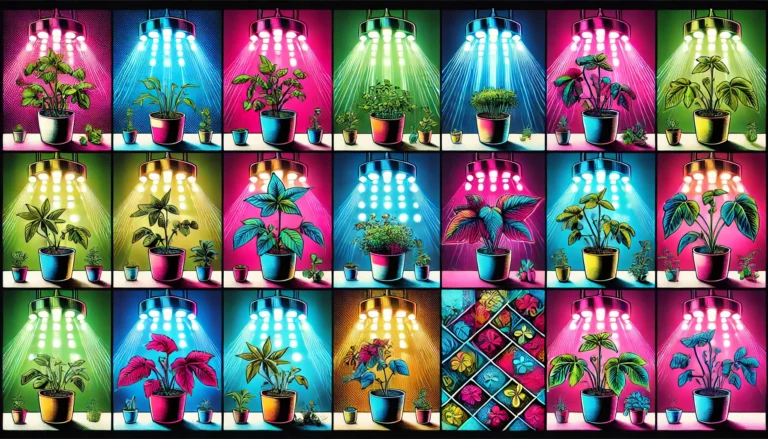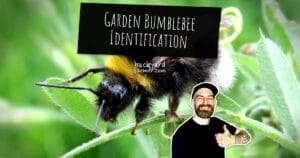Table of contents
Introduction
Unlock Your Garden’s Potential with LED Grow Lights
Maximizing plant growth with LED grow lights is the key to successful indoor gardening. These lights provide an energy-efficient and customizable way to simulate natural sunlight, helping your plants thrive in any season or location. Let’s explore how to use LED grow lights effectively to create a vibrant indoor garden.
This guide explores how to maximize plant growth with LED grow lights by integrating essential tools and strategies. From monitoring light intensity with light meters to controlling temperature with advanced systems, we’ll cover everything you need to know to create the perfect environment for your plants.
What You’ll Learn:
- The role of LED grow lights in promoting plant health and productivity.
- Tools like light meters and temperature control systems that optimize light usage.
- Practical tips for adjusting light placement during different growth stages.
By the end of this article, you’ll have all the knowledge and tools to take your indoor gardening to the next level. For a full comparison of top models that deliver those growth gains, see our guide to the best LED grow lights for indoor gardens.
Why LED Grow Lights Are Essential
LED grow lights have revolutionized indoor gardening, offering a highly efficient and customizable way to support plant growth year-round. Unlike traditional lighting options, LED grow lights deliver the precise wavelengths of light your plants need, promoting healthier growth and higher yields.
Advantages of LED Grow Lights
- Energy Efficiency: LED grow lights consume less electricity than fluorescent or incandescent bulbs, making them cost-effective over time.
- Customizable Light Spectrum: Tailor the light to your plants’ needs, such as blue light for vegetative growth or red light for flowering.
- Longevity: High-quality LED grow lights last for tens of thousands of hours, reducing the need for frequent replacements.
- Minimal Heat Output: LEDs produce significantly less heat, minimizing the risk of plant stress or burns.
A well-planned LED grow light setup for indoor plants ensures consistent light exposure, promoting healthier growth and higher yields.
How LED Grow Lights Support Different Growth Stages
LED technology allows you to adjust the light spectrum and intensity to suit specific stages of plant growth. The table below provides a quick reference for optimizing your grow light setup:
| Growth Stage | Optimal Spectrum | Light Intensity | Benefits |
| Seedling Stage | Blue light (400–500 nm) | Low intensity (50–100 PPFD*) | Encourages strong roots and initial stem development. |
| Vegetative Stage | Blue-heavy spectrum (400–500 nm) | Moderate intensity (200–400 PPFD) | Promotes leafy growth and sturdy stems. |
| Flowering/Fruiting Stage | Red light (600–700 nm) | High intensity (600–900 PPFD) | Boosts flowering, fruiting, and overall yield. |
*PPFD: Photosynthetic Photon Flux Density, measured in micromoles per square meter per second (μmol/m²/s).
Why They’re a Game Changer for Indoor Gardening
- Flexibility: Grow plants in any environment, from apartments to basements.
- Consistency: Provide steady light conditions, regardless of the weather outside.
- Scalability: Use LED grow lights for everything from small herb gardens to large-scale indoor farms.
By understanding how LED grow lights work and using them strategically, you can create an ideal environment for your plants, ensuring they grow healthier and produce better yields.
Tools to Enhance LED Grow Light Efficiency
Maximizing the benefits of LED grow lights requires complementary tools that help create an ideal growing environment. By integrating tools like light meters, temperature control systems, humidity monitors, and reflective materials, you can ensure your plants receive optimal conditions at every growth stage.
Light Meters: Monitoring Light Intensity
Plants need specific light intensities to thrive, and light meters help you measure and adjust these levels accurately. This ensures your plants receive the right amount of light, preventing underexposure or stress from excessive brightness.
- Recommended Products:
- Apogee MQ-500 Full-Spectrum Quantum Meter
- Dr. Meter LX1330B Digital Illuminance Light Meter
Temperature Control Systems: Maintaining Ideal Heat Levels
Temperature is critical for plant health, especially in indoor environments. Temperature control systems ensure your grow space stays within the ideal range for each stage of growth, preventing heat stress and promoting robust development.
- Recommended Products:
- AC Infinity CLOUDLINE T6 Inline Duct Fan
- Inkbird ITC-308 Digital Temperature Controller
Humidity Monitors: Regulating Moisture Levels
Humidity affects plant transpiration and nutrient absorption. Using humidity monitors helps maintain appropriate moisture levels for seedlings, vegetative growth, and flowering stages.
- Recommended Products:
- Govee WiFi Hygrometer Thermometer
- VIVOSUN Digital Hygrometer
Reflective Materials: Maximizing Light Efficiency
Reflective materials improve light distribution, ensuring every plant receives sufficient illumination. They minimize light wastage, improve energy efficiency, and support even growth across your setup.
- Recommended Products:
- Mylar Sheets
- Panda Film
Essential Tools for LED Grow Light Efficiency
| Tool | Purpose | Recommended Products |
| Light Meters | Measure light intensity (PPFD) for precision | – Apogee MQ-500 Quantum Meter- Dr. Meter LX1330B |
| Temperature Control Systems | Maintain optimal temperature (20°C-26°C) | – AC Infinity CLOUDLINE T6- Inkbird ITC-308 Thermostat |
| Humidity Monitors | Track and adjust humidity levels (30%-75%) | – Govee WiFi Hygrometer- VIVOSUN Digital Hygrometer |
| Reflective Materials | Distribute light evenly across grow space | – Mylar Sheets- Panda Film |
Optimizing Light Use for Specific Plant Stages
Maximizing plant growth with LED grow lights involves tailoring the spectrum and intensity to meet the specific needs of your plants.
Different stages of plant growth require tailored light intensities, spectra, and placement to maximize health and yields. LED grow lights offer flexibility to meet these needs by allowing adjustments in spectrum and intensity. In this section, we’ll explore how to fine-tune your setup for each stage of growth.
Seedling Stage: Gentle Beginnings
Seedlings are delicate and require low light intensity with a focus on blue light. This spectrum encourages strong root and initial stem development without overwhelming the young plants.
Tips for Seedling Stage:
- Place lights 24–30 inches above the seedlings to prevent stress.
- Use blue-heavy spectrums with 50–100 PPFD (Photosynthetic Photon Flux Density).
- Ensure consistent light exposure for 14–16 hours daily.
Recommended Lights for Seedlings:
- VIPARSPECTRA P1000 LED Grow Light: Blue-heavy spectrum suitable for young plants.
- Roleadro LED Grow Light: Budget-friendly and ideal for low-intensity lighting.
Vegetative Stage: Building Strength
The vegetative stage demands higher light intensity and a balanced spectrum, with an emphasis on blue light for leafy growth. Plants develop sturdy stems and lush foliage during this phase.
Tips for Vegetative Stage:
- Reduce the distance between the light and the plants to 18–24 inches.
- Increase intensity to 200–400 PPFD.
- Provide 16–18 hours of light per day.
Recommended Lights for Vegetative Growth:
- Spider Farmer SF-2000 LED Grow Light: Balanced spectrum and high efficiency.
- Phlizon CREE COB Series: Ideal for robust vegetative development.
Flowering and Fruiting Stage: Boosting Production
During the flowering and fruiting stage, red light becomes crucial to stimulate blooms and fruit production. Plants require the highest intensity at this stage to maximize yields.
Tips for Flowering/Fruiting Stage:
- Position lights 12–18 inches above the canopy for maximum penetration.
- Adjust intensity to 600–900 PPFD.
- Maintain a light schedule of 12–14 hours daily for flowering plants.
Recommended Lights for Flowering/Fruiting:
- Mars Hydro TS 1000 LED Grow Light: Red-heavy spectrum optimized for flowering.
- KingLED 1000W LED Grow Light: High intensity with excellent red light output.
To find the perfect LED grow light for your setup, check out our Best LED Grow Lights for Indoor Gardens in 2024, featuring top recommendations tailored to different needs.
Light Optimization by Plant Stage
| Growth Stage | Light Spectrum | Light Intensity (PPFD) | Light Duration | Recommended Products |
| Seedling Stage | Blue light (400–500 nm) | 50–100 PPFD | 14–16 hours/day | – VIPARSPECTRA P1000- Roleadro LED Grow Light |
| Vegetative Stage | Balanced spectrum | 200–400 PPFD | 16–18 hours/day | – Spider Farmer SF-2000- Phlizon CREE COB |
| Flowering/Fruiting Stage | Red light (600–700 nm) | 600–900 PPFD | 12–14 hours/day | – Mars Hydro TS 1000- KingLED 1000W |
By customizing your LED grow light setup for indoor plants, you can tailor the spectrum and intensity to match each stage of growth.
By customizing your LED grow light setup for each stage of plant growth, you can ensure healthier plants and higher yields. Adjusting spectrum, intensity, and placement allows you to cater to the specific needs of your plants at every stage.
Practical Tips for Maximizing Growth
Optimizing your indoor gardening setup requires more than just the right tools and lights—it’s about leveraging best practices to create the ideal environment for your plants. These practical tips will help you maximize the effectiveness of your LED grow lights and ensure healthier, more productive plants.
Adjust Light Placement Regularly
As plants grow, their distance from the light source changes. Adjusting the height of your LED grow lights ensures that plants receive consistent light intensity without experiencing stress or burns.
Tips:
- Measure light intensity with a light meter to maintain the recommended PPFD for each growth stage.
- Keep lights closer during the flowering stage for deeper canopy penetration.
- Avoid placing lights too close to prevent leaf scorching.
Use Reflective Materials
Maximize the light your plants receive by adding reflective materials to your grow space. This minimizes light loss and ensures even distribution across all plants.
Tips:
- Line grow tent walls with Mylar sheets or Panda Film.
- Place reflective surfaces around plants in open spaces.
- Clean reflective materials regularly to maintain efficiency.
Maintain Ideal Temperature and Humidity
LED grow lights produce minimal heat, but maintaining the correct temperature and humidity is essential for plant health. Use temperature control systems and humidity monitors to regulate these conditions.
Ideal Ranges:
- Seedlings: Higher humidity (65%-75%) with temperatures around 20°C (68°F).
- Vegetative Stage: Moderate humidity (40%-60%) and temperatures between 22°C-25°C (72°F-77°F).
- Flowering Stage: Lower humidity (30%-50%) with temperatures around 24°C-26°C (75°F-80°F).
Implement a Light Schedule
Consistency is key for indoor gardening success. Plants thrive on regular light schedules that mimic natural day and night cycles.
Tips:
- Use programmable timers to automate light schedules.
- Follow recommended light durations for each growth stage (e.g., 16–18 hours for vegetative, 12–14 hours for flowering).
- Gradually transition between stages to avoid plant shock.
Troubleshoot Common Issues
Even with the best tools, challenges can arise. Recognizing and addressing issues early can save your plants.
Common Problems and Solutions:
- Leggy Seedlings: Move lights closer or increase intensity.
- Yellowing Leaves: Check for overwatering, nutrient deficiencies, or excessive light.
- Slow Growth: Ensure the light spectrum matches the plant’s needs and maintain proper temperature.
For more insights into creating the perfect environment for your indoor garden, read this guide on the best grow room conditions for maximum yield.
Practical Tips for Maximizing Growth
| Tip | Purpose | Tools/Methods |
| Adjust Light Placement | Maintain consistent light intensity | Light meters, adjustable light fixtures |
| Use Reflective Materials | Maximize light efficiency | Mylar sheets, Panda Film |
| Maintain Temperature/Humidity | Create ideal growing conditions | Temperature controllers, humidity monitors |
| Implement Light Schedules | Mimic natural light cycles | Programmable timers |
| Troubleshoot Common Issues | Address growth problems early | Monitoring tools, regular inspections |
By following these practical tips, you’ll create a thriving indoor gardening environment where plants grow healthier and more productive. With careful attention to placement, environment, and schedules, your LED grow lights can achieve their full potential.
Conclusion
LED grow lights are a game-changer for indoor gardening, offering unparalleled control and flexibility to grow plants year-round. However, maximizing their potential requires understanding your plants’ needs and integrating the right tools and practices into your setup.
For indoor gardeners, maximizing plant growth with LED grow lights is the key to achieving healthier and more productive plants. Growers who want to go beyond the basics can explore more advanced lighting techniques to fine-tune their results.
Key Takeaways:
- LED Grow Lights Benefits: Energy-efficient, customizable, and ideal for different growth stages, from seedlings to flowering plants.
- Essential Tools: Light meters, temperature control systems, humidity monitors, and reflective materials enhance the effectiveness of LED grow lights.
- Optimized Light Use: Adjust spectrum, intensity, and placement according to each growth stage for healthier plants and higher yields.
- Practical Tips: Maintain ideal conditions by regulating temperature and humidity, using reflective materials, and following consistent light schedules.
By following the strategies and tips outlined in this guide, you’ll create a thriving indoor garden that produces vibrant, healthy plants. Whether you’re growing herbs, leafy greens, or fruiting plants, LED grow lights combined with the right tools will ensure success.Call to Action: Ready to transform your indoor gardening setup? Explore our recommended tools and LED grow lights to get started today. Your plants—and your harvest—will thank you!





